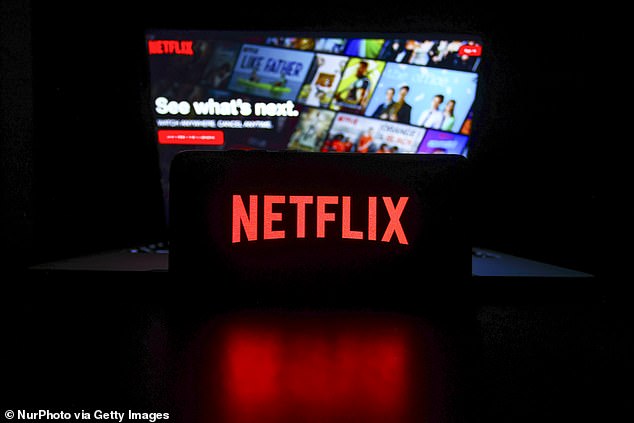Netflix will begin phasing out its most affordable ad-free option, the company announced Thursday.
The streaming giant had already stopped accepting new customers for its Basic plan, which costs $11.99 a month, last October.
But existing Basic plan subscribers were still able to continue with their current plan.
But now Netflix has said it will retire the tier entirely, and existing customers – tens of millions – will have to migrate to another plan.
Basic plan users looking for an ad-free Netflix experience will now have two options: the Standard plan at $15.49 per month or the Premium plan that has 4K for $22.99 per month.
Or, customers can upgrade to the ad-supported plan, which costs $6.99 per month.
Netflix is phasing out its Basic plan for existing customers. The streaming giant had already stopped accepting new customers for the plan, which costs $11.99 per month, last October.
Netflix announced the same move for Canada and the UK in January, where more and more customers are reporting being contacted to change their plan.
If Netflix follows that timeline for the US, customers in the US will receive warnings later this year or early next year.
Customers have been reacting to the removal of the Basic plan on social media.
On Reddit, one user wrote: ‘They’re taking away the plan most people have had for years and forcing them to upgrade to a higher tier.
“It’s a great plan to force people back to sea!”
Meanwhile, later on Thursday, Netflix said it added more than 8 million subscribers in its second quarter, from April to June.
The streaming service has benefited from a campaign against password sharing and titles such as ‘Bridgerton’, ‘Baby Reindeer’ and ‘The Roast of Tom Brady’.
While subscriber growth exceeded analysts’ predictions of 5 million, Netflix also warned that third-quarter subscriber growth would be smaller than the comparable period in 2023, when the crackdown on password sharing had just begun.
Netflix also said its vice president of advertising sales, Peter Naylor, would be leaving the company.
In a letter to investors, the company said it did not expect advertising to be a primary driver of revenue growth until at least 2026.
Netflix shares fell 2 percent in after-hours trading to $630.06.
By the end of June, new subscriptions brought Netflix’s total global subscriber count to more than 277 million.
The video streaming pioneer is facing saturation in the United States and told Wall Street last quarter that it plans to stop regularly reporting new subscriber additions next year.
Investors have been closely watching the growth of Netflix’s ad-supported tier, which has been boosted by the company’s crackdown on password sharing, price increases for ad-free tiers and new consumer bundles such as Comcast’s “StreamSaver” package, which combines Netflix with Peacock and Apple TV+.
Netflix said its ad-supported membership tier grew 34 percent from the previous quarter, but did not say how many subscribers chose that option.
“Our advertising business is growing at a good pace and is becoming an increasingly significant contributor to our business,” Netflix said in its letter to investors. “But building a business from scratch takes time, and coupled with the large size of our subscription revenues, we do not expect advertising to be a primary driver of our revenue growth in 2024 or 2025.”
The company said it expects third-quarter revenue growth of 14%, compared with last year.
NETFLIX PRICE INCREASES OVER TIME
Our interactive chart below shows how prices have changed and when new plans have been introduced.
Since its launch in 2011, Netflix has kept its prices virtually unchanged.
But since 2016, Netflix has been steadily raising the prices of its various services, usually about every two years.
For example, in October 2017, subscribers with both the standard and premium subscription options found they would have to shell out an extra $1 per month.
In May 2019, the streaming service raised the price of its cheapest subscription for the first time. Basic Netflix subscribers had to pay $1 more per month, from $7.99 to $8.99. Standard and premium subscription plans increased by $2, to $12.99 and $15.99, respectively.
In October 2023, in addition to eliminating its $9.99 basic plan, Netflix also increased its ad-free premium plan, which allows users to add two additional members from different households, from $19.99 to $22.99 per month.

